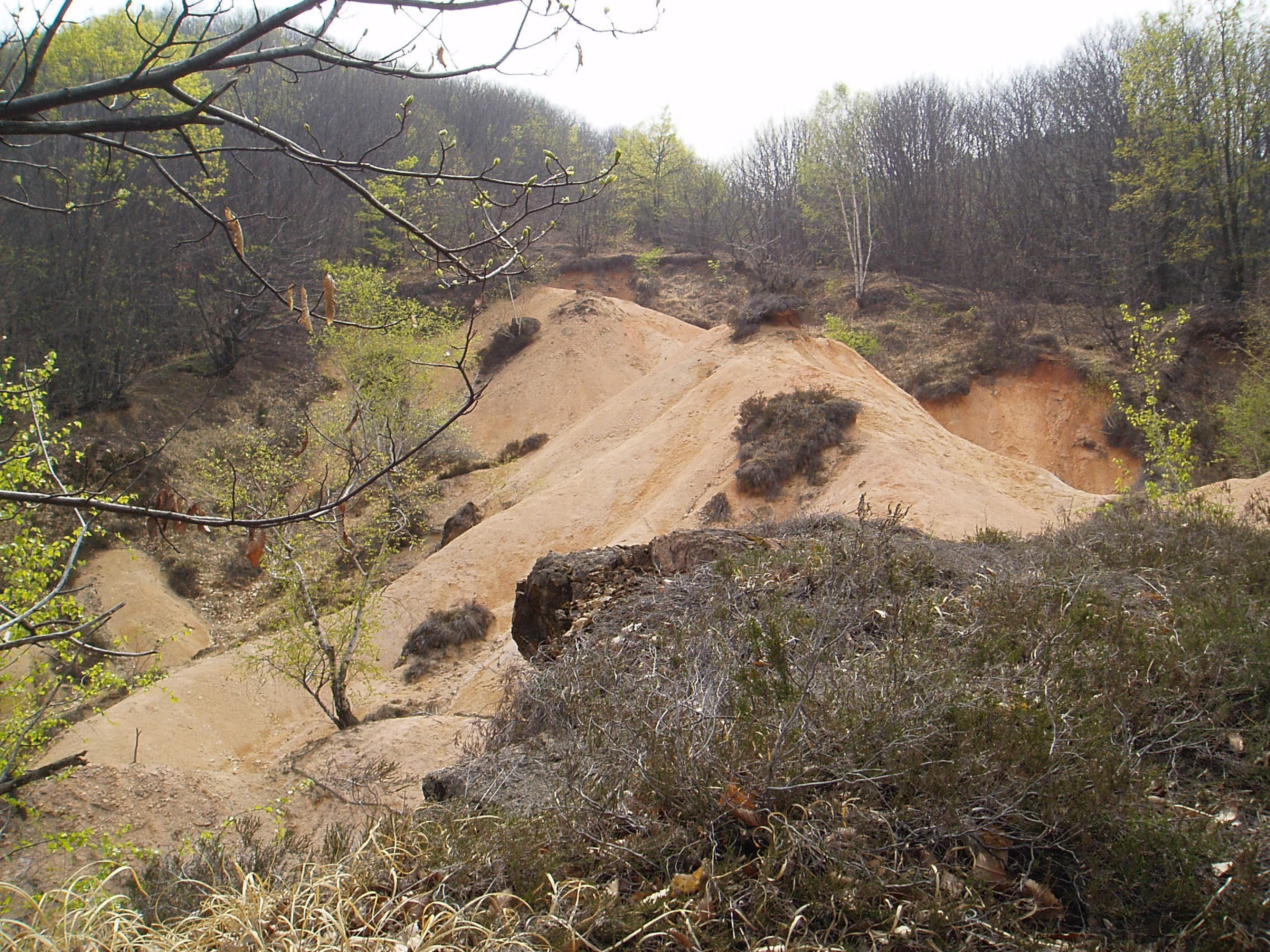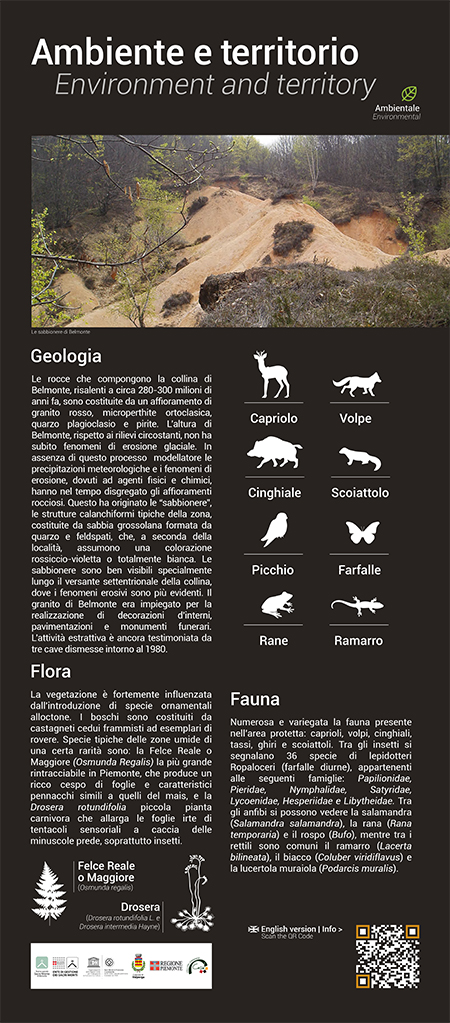Belmonte blacksands
Geology
The stones that compose the hill of Belmonte, dating back to about 280-300 milion years ago, they consisted of a red granite outcrop, orthoclastic microperthite, plagioclastic quartz and pyrite. The hill of Belmonte, compared to the surrounding landforms, does not have undergone phenomena of glacial erosion. In abscence of this shaping process, the meteorological rainfalls and the phenomena of erosion, caused by physical and chemical agents, they have broken down rocky outcrops over time. This originated the “blacksands”, the badlands-shaped structures typical of the area, made up of coarse sand formed by quartz and feldspars which, depending on the location, they take on a red-violet or a totally-white color. The blacksands are clearly visible, especially along the northern side of the hill, where the phenomena of erosion are more evident. The Belmonte granite was employed for the realization of interior decorations, flooring and funerary monuments. The extraction activity is still testified by three abandoned quarries around 1980.
Flora
Most of the territory of the reserve is covered by forests, mainly coppice chestnut groves mixed with durmasts.
Among the unique species that grow in damp areas there are two.
The first one is the Royal Fern (Osmunda Regalis), the biggest species of fern, which produces a large clump of fronds and peanicle-like inflorescence.
The second one is Drosera rotundifolia a small carnivorous plant that trap small prey in sticky hairs on their leaves.
Royal fern
(Osmunda regalis)
Drosera
(Drosera rotundifolia L. e Drosera intermedia Hayne)
Fauna
The fauna present in the protected area is large and varied: roe deers, foxes, boars, badgers, dormouses and squirrels.
Among the insects there are 36 species of Ropaloceri lepidoptera, (diurnal butterflies) belonging to these families: Papilionidae, Pieridae, Nymphalidae, Satyridae, Lycoenidae, Hesperiidae and Libytheidae.
Among the amphibians there are salamander (Salamandra salamandra), frog (Rana temporaria) and toad (Bufo), while green lizard (Lacerta bilineata), coluber (Coluber viridiflavus) and wall lizard (Podarcis muralis) are common among the reptiles.
1. Roe deer
2. Fox
3. Boar
4. Squirrel
5. Woodpecker
6. Butterflies
7. Frogs
8.Green lizard

Le sabbionere di Belmonte 
DOWNLOAD
Credit:
Progetto architettonico: Studio associato FFWD Architettura/ arch. Antonio Cinotto, arch. Mariangela Angelico
Studio grafico: DSweb lab /Davide Aletti


 Questo portale www.sacrimonti.org è un progetto finanziato a valere sui fondi della Legge 20 febbraio 2006, n. 77
Questo portale www.sacrimonti.org è un progetto finanziato a valere sui fondi della Legge 20 febbraio 2006, n. 77